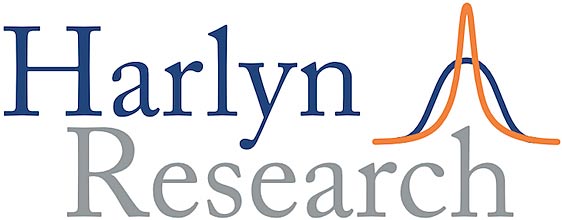Our flagship product, called Synopsis, is published every two weeks. It uses the data generated by our process to address whatever we think are the most important issues in global investing at the time.
All our notes are tagged thematically, so feel free to click on any of the topics and explore what we have written.
Under UK regulations, our research is only available to professional clients and eligible counterparties; they are not available to retail (investment) clients. Harlyn Research is not registered as an investment advisor with the SEC and therefore any information about our investment products or services is not directed at nor intended for US investors.
Why Yields Could Go to 6%
Friday, September 29th, 2023But not immediately
We think investors should re-acquaint themselves with the relationship between nominal GDP and 10-year Treasury yields. Over the last 60 years there has been a good relationship between yields and the three-year trend in nominal GDP growth. At the end of Q2 2023, yields were far too low in relation to this trend, much lower than they were in the 1970’s before Chairman Volcker tightened monetary policy in the 1980’s. This sent yields to the top of the range in relation to GDP in just four years. We think that Chairman Powell’s higher for longer stance, coupled with ongoing QT of $900 billion a year, will eventually be as influential in boosting Treasury yields above the trend rate of growth, possibly for a period of several years. We use a variety of forecasting techniques, all of which suggest yields in excess of 6.0% sometime in 2026, but maybe earlier.
PURCHASE ALL ACCESS PASS
Already hold an All Access Pass? LOG IN
The Next Ten Percent
Friday, September 15th, 2023What happens if US equities have a correction
We think that US equities may be vulnerable to a correction over the next two to three months. Our models suggest that the Technology sector may be about to underperform and that this could put pressure on other related sectors which have also performed strongly this year. We identify three separate trades which may be able to mitigate some of the impact: long-dated US Treasuries, large cap Japanese equities and Energy equities in the US and Europe. The rationale behind each idea is discussed in detail in the note, but the key point is that they are largely unrelated and therefore offer an interesting diversification strategy as well.
PURCHASE ALL ACCESS PASS
Already hold an All Access Pass? LOG IN
Timing the Market Successfully
Friday, September 1st, 2023Modelling the behaviour of risk-seeking investors
For some time, we have been interested in the behaviour of risk-seeking investors, which we model using a variant of our standard approach, called a pro-risk momentum model. We find that it can be used to time switches between cash and US equities, so that our model outperforms US equities on a standalone basis over the last 50 years. This is a result which most academic research regards as unachievable. In absolute terms, the quantum of outperformance is not material, but the risk-adjusted returns are clearly superior and the drawdowns are significantly smaller and shorter. We find that the same approach also works when combining US 10-year Treasuries with cash and a broad commodity index with cash.
PURCHASE ALL ACCESS PASS
Already hold an All Access Pass? LOG IN
China on the Brink
Friday, August 18th, 2023Who is exposed in Europe and the US
PURCHASE ALL ACCESS PASS
Already hold an All Access Pass? LOG IN
Three Big Risks
Friday, August 4th, 2023Dollar, oil and Treasury yields
Our models suggest that the near-term outlook for crude oil and 10-year Treasury yields is higher, while the trade weighted dollar is lower. This is not the consensus view. More importantly, we think that the medium-term risk-case for Treasury yields and the US dollar is much worse than the consensus is prepared to consider. It is hard to imagine a world of high and rising yields, if you have spent your career in an era of falling yields. The same is true of the dollar but in reverse. Investors ought to make the effort to do so, lest they are unpleasantly surprised.
PURCHASE ALL ACCESS PASS
Already hold an All Access Pass? LOG IN
A Label Without Meaning
Friday, July 21st, 2023EM Equities have too much complexity and not enough return
All EM equity indices comprise a mix of countries which once shared some important economic characteristics, but no longer do. The whole asset class is dominated by China, where the investment outlook is increasingly uncertain. Looking at over 20 different countries with vastly different growth profiles and levels of income no longer makes sense. Investors who wish to reduce the complexity of their portfolios should think about swapping their EM equity allocation for one to India on its own. It has outperformed its benchmark by a substantial margin over the last 5,10, and 20 years and will probably continue to do so given its superior demographic profile and productivity outlook.
PURCHASE ALL ACCESS PASS
Already hold an All Access Pass? LOG IN
False Sense of Security
Monday, July 10th, 20237-10 year Treasuries offer no hedge against equity declines
We are mystified by the ongoing strength of the long end of the US yield curve. We fully acknowledge our bias towards a higher-for-longer view of inflation. Even so, we don’t understand why investors are willing to put up with lower yields and higher volatility than they could get by investing in shorter-dated Treasuries. Over the last 18 months, 7-10 year US Treasuries have delivered absolutely no protection against a decline in US equities. In fact, they have a tendency to decline at the same time and this downside beta has been getting worse. The same relationship affects all Treasury maturities from 1-3, all the way out to 10-20, but the 7-10 year index has the worst beta.
PURCHASE ALL ACCESS PASS
Already hold an All Access Pass? LOG IN
Worlds Apart
Monday, June 26th, 2023US Megacaps are behaving like a separate asset class
For some time, we have been discussing with clients the possibility of dividing up the equity universe in a different way, to give us more flexibility with our regional equity allocation. To do this, we would have to split the US into two. There are many ways in which this could be done, but it is really hard (actually impossible) to come up with financial metrics or thematic approaches which would give us a consistently applicable framework, without lots of anomalies. So, we opted for a really simple definition: the top 10 stocks, from time to time, vs the rest. These typically account for just over 40% of the market capitalisation of the S&P500. We find clear evidence that this group behaves differently from the rest of the US, often having an overweight position, when the rest of the US is underweight. As far as the current situation is concerned, we suggest that the right way to fund an increased exposure to Nasdaq, FAANG or Megacaps, is not to sell European stocks, but the rest of US equities.
PURCHASE ALL ACCESS PASS
Already hold an All Access Pass? LOG IN
For the Unbelievers
Friday, June 2nd, 2023Low risk, not high return, makes Japanese equities attractive
Our proprietary volatility index dropped out of the danger zone three weeks ago, having warned us back in May 2022 that something was going to break. This helps to explain why investors feel so comfortable with equity risk at the moment. All equity regions have levels of realised volatility below their 25-year median and only US Treasuries are still in the danger zone. The volatility of Japanese equity returns is in the 13th percentile of its 25-year history. Investors don’t have to believe the new (or is it the old) shareholder activism story. The risk-cost of entry into Japanese equities is low by historical standards and that is enough to make the risk-reward calculations work.
PURCHASE ALL ACCESS PASS
Already hold an All Access Pass? LOG IN
Search our Site
- Bear Markets (12)
- Bubble (2)
- Cash (8)
- China (43)
- Commercial Property (1)
- Commodities (8)
- Corporate Bonds (17)
- Correction (10)
- Correlation (9)
- COVID-19 (3)
- Credit Quality (2)
- Crude oil (1)
- Defensives (14)
- Diversification (28)
- Dividends (3)
- Dollar index (6)
- Duration (1)
- Earnings Estimates (7)
- Economic Forecasts (2)
- Elections (9)
- Emerging Markets (40)
- Energy Prices (14)
- Equities (56)
- ESG (2)
- Eurozone (37)
- Eurozone Crisis (7)
- Financials (9)
- Fiscal policy (2)
- FX rates (27)
- Geo-Political Risk (15)
- Global Equities (57)
- Government Bonds (25)
- Harlyn's Process (24)
- Healthcare (2)
- Hedge Funds (3)
- High Conviction Ideas (1)
- High Yield (3)
- India (2)
- Industrials (4)
- Inflation (8)
- Interest Rates (7)
- Investment Styles (8)
- Japan (24)
- Leverage (1)
- Market dislocation (6)
- Market Timing (38)
- Momentum vs mean reversion (3)
- QE / QT (10)
- Real Economy (3)
- Real Estate (6)
- Real Yield (2)
- Recession (4)
- REITs (1)
- Risk aversion (10)
- Risk-Adjusted Returns (23)
- Rotation (18)
- Seasonality (12)
- Sector Strategy (48)
- Small Caps (7)
- Tail Risk (5)
- Technology (22)
- Turning Points (3)
- United Kingdom (22)
- United States (66)
- US Treasuries (17)
- Volatility (30)
- White Paper (1)
- Yield curve (8)

